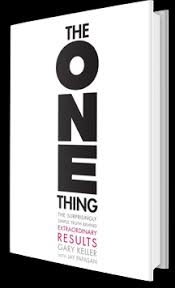Be Remarkable! – Seth Godin’s Lessons for Standing Out
Introduction to the Concept of “Remarkable”
The concept of being remarkable was popularized by Seth Godin in the context of marketing and business, representing an essential approach for standing out in a world saturated with information and offers. In Godin’s vision, being remarkable means not only offering a high-quality product or service but also delivering a unique element that captures consumers’ attention. This principle is based on the idea that, in an era marked by fierce competition and extreme diversity, merely conforming to industry standards is no longer sufficient to ensure long-term success.
In marketing, standing out translates into creating products and campaigns that not only meet consumer expectations but exceed them by generating emotion and memorable experiences. This requires a deep understanding of the target audience and a creative approach to developing one’s product offer. Godin also emphasizes the importance of the stories we tell about what we offer, which are crucial for building a lasting connection with customers.
Another fundamental aspect of the concept of being remarkable is the idea of having the courage to be different. This means abandoning the fear of expressing one’s true identity and embracing the risk of being seen as nonconformist. Godin urges us not to be afraid of taking risks and challenging existing norms, because it is innovation and authenticity that differentiate us in a crowded market and attract both attention and customer loyalty.
- Seth Godin
- The Dip
- 978-0749928308, 0749928301, 9780749928308
Who is Seth Godin?
Seth Godin is an author, entrepreneur, and marketing expert known for his innovative perspectives on business and advertising. Born on July 10, 1960, Godin graduated from Tufts University with a degree in political science, followed by an MBA from the University of Chicago. His career began in advertising, but he quickly evolved, and in 1995 he founded one of the first internet marketing companies called YoYo Dine.
Over time, Seth Godin has published more than 20 best-selling books, among which the most well-known include “Purple Cow,” “The Dip,” and “Tribes.” These works, translated into multiple languages, have profoundly influenced how entrepreneurs approach marketing and business strategy. In “Purple Cow,” for example, Godin urges readers to stand out through innovation and create remarkable products that capture consumers’ attention, while “Tribes” focuses on the importance of building a community around ideas.
Seth Godin is also an accomplished speaker, participating in international conferences and prestigious events to share his perspectives. His blog, which has gained global popularity, is a valuable source of information and inspiration for marketers, entrepreneurs, and opinion leaders.
His collaboration with various organizations and involvement in social campaigns reflects his commitment to innovation and positive impact. Due to his influential works, Seth Godin has become a central figure in modern marketing, and his ideas continue to be relevant and appreciated.
Why Be Remarkable?
In a world characterized by fierce competition and a constant flow of information, it has become essential to be remarkable in order to stand out. The concept of being remarkable does not refer only to having a superior quality product or service, but rather to delivering a unique experience to consumers. Statistics show that brands that manage to differentiate their offer enjoy greater customer loyalty and can command higher prices.
A relevant example is the company Apple, which was not just a mobile phone manufacturer, but also created a global community of users who identify the brand with innovation and simplicity of use. This innovative approach allows Apple to maintain consistent sales and often exceed market expectations. Additionally, a study by McKinsey highlighted that organizations with a distinct value proposition can see revenue growth of 15–20% compared to direct competitors.
These data underscore the importance of being remarkable in an ever-changing business environment. Whether it is about innovation, excellent customer service, or a compelling brand story, differentiation is key. Consumers are more likely to support brands that impress them and manage to offer a memorable experience. Thus, becoming remarkable is not just an option but a necessity in the modern economy.
Case Study: Remarkable Brands in Action
In a highly competitive world, some brands manage to capture attention and stand out through innovative strategies. These companies have understood the importance of being remarkable, according to Seth Godin’s lessons. For example, the brand Apple has become a symbol of innovation through its elegant design and unique user experience. Apple did not just launch technological products but also built a genuine community of loyal consumers by combining functionality with aesthetic appeal. This approach has transformed Apple into an iconic brand that constantly redefines the technology market.
Another relevant example is Tesla, which revolutionized the automobile industry by focusing on electric vehicles and sustainability. Elon Musk, Tesla’s founder, has used creative marketing to present not just a product, but a vision for the future. The necessity of combining technological innovation with environmental consciousness enabled the brand to stand out, setting high standards and attracting a clientele passionate about sustainability. These strategies have not only differentiated Tesla from its competitors but also inspired other companies to follow the same path.
In the apparel sector, the brand Patagonia exemplifies how a commitment to social and environmental responsibility can define a remarkable brand. Through its ecological initiatives, Patagonia sells not just clothes, but also a lifestyle that values nature. This approach allows consumers to identify with the brand’s mission, turning purchases into conscious choices. Thus, these brands not only stand out in the market, but they also serve as models for future companies.
Strategies to Become Remarkable
To become remarkable, it is essential to adopt strategies based on Seth Godin’s teachings, which promote originality and innovation in every aspect of our endeavors. The first step is to identify your competitive advantage. This can be achieved by analyzing the market and understanding the needs of your customers, then focusing on those strengths that differentiate you from competitors. A competitive advantage can arise from specific expertise, a unique approach, or even superior quality of the products or services offered.
Another strategy recommended by Godin is to create and nurture a community around your brand. A strong community not only supports your product but adds value by facilitating interactions and constructive feedback. Engaging in discussions, events, or social platforms can help solidify your image as an expert in the field and strengthen relationships with potential customers.
Additionally, it is important to adapt your communication methods to meet current trends and demands. Godin emphasizes the importance of storytelling as a marketing tool. A well-crafted story not only captures attention but also creates an emotional bond with your audience, thus facilitating the conversion of viewers into loyal customers. Sharing these stories through appropriate channels—whether they are blogs, social media, or email marketing—is crucial to reaching your target audience.
Implementing these strategies can enable you to create a remarkable brand that withstands market challenges and builds long-term customer loyalty. In this way, not only do you stand out, but you also showcase your potential to influence and inspire.
The Impact of Technology on Remarkability
In recent years, technology has revolutionized the way individuals and organizations build and promote their remarkability. Digital media and modern technological tools offer significant opportunities to create and communicate a unique brand. Key roles of technology in marketing strategy include:
- Personalizing the User Experience: Emerging technologies like artificial intelligence and data analytics allow brands to personalize interactions with consumers, offering recommendations and tailored offers.
- Direct and Efficient Communication: Social platforms and digital channels facilitate direct communication with your target audience, enabling brands to convey relevant messages and interact in real time.
- Creating Innovative Content: Modern technologies enable the production of creative and engaging content, such as interactive videos, augmented reality experiences, and viral campaigns, which capture attention and stand out from standardized content.
- Monitoring and Analysis: Analytical tools allow brands to evaluate the effectiveness of their marketing campaigns and adjust strategies based on results, optimizing impact and relevance.
- Accessibility and Scalability: Digital technology allows brands to reach a global audience and expand their operations without massive investments in physical infrastructure.
Moreover, social media has become an essential tool for building and consolidating remarkability. Platforms like Instagram, Twitter, and LinkedIn not only facilitate rapid information sharing but also enable brands to develop communities around their values and visions. This direct engagement gives consumers the opportunity to interact personally with brands, increasing long-term loyalty and recognition.
Technology is not just a tool; it is a catalyst for change that redefines what it means to be remarkable. This ongoing transformation in how we communicate and interact underscores the need to adopt a mindset of constant innovation to remain relevant and stand out in the face of competition.
Obstacles to Remarkability
Entrepreneurship is a field full of opportunities but also challenges, and the desire to stand out in the market can often be overshadowed by significant obstacles. One of the most significant challenges faced by both entrepreneurs and companies is the fear of failure. This fear can manifest in various ways, affecting decisions and efficiency. For example, a company might avoid taking calculated risks, preferring to stay in its comfort zone, which ultimately reduces its potential to become remarkable.
The fear of failure can lead to stagnation and an inability to innovate. Companies that do not take risks will not develop unique products or services, which are essential for distinguishing themselves in a competitive market. Moreover, this fear can create an organizational culture where innovation and creativity are discouraged. Employees, influenced by this mindset, may feel constrained by existing norms, afraid to express original ideas or propose innovative solutions.
Another important obstacle is the tendency to conform to industry standards, which can lead to homogenization of offers. This conformity may result in a stagnation in creative thinking and a lack of differentiation. Entrepreneurs must recognize and challenge these traditional norms to develop strategies and solutions that resonate with their target audience. In conclusion, overcoming these challenges is essential for transforming ideas into remarkable initiatives that capture attention and market appreciation.
Inspire and Be Inspired
In a constantly changing world, the power of influence and community becomes essential for standing out. Remarkable individuals have demonstrated that through inspiration and action, significant changes can be generated, both in one’s own life and within communities. These leaders have not only influenced society but have also built united, resourceful communities that, in turn, promote innovative ideas. A prime example is Nelson Mandela, whose courage and determination inspired millions of people to fight for equality and freedom.
Additionally, personalities such as Malala Yousafzai show us how one person’s voice can have a global impact on education. Her story serves as a powerful reminder that inspiration can come from the darkest corners of the world, and that each of us has the responsibility to encourage and support others. Involvement in community actions, such as volunteering or organizing awareness events, can transform ideas into concrete actions and inspire those around us.
In this sense, it is not enough to focus solely on our own achievements; it is vital to actively engage in building a community that promotes learning and development. Collecting resources, collaborating with others, and supporting initiatives that value diversity are essential steps to create an environment conducive to inspiration. In this way, we develop not only our own potential but also that of the community we belong to. So, be inspired—and more importantly, inspire others!
Conclusion – The Path to Remarkability
Remarkability, a central concept in Seth Godin’s thinking, is not merely a destination but a continuous journey filled with lessons and adaptations. Throughout this article, we have explored various strategies and principles that can help any individual or organization stand out—not just as a voice in the crowd, but as a beacon of originality and innovation. Godin teaches us that differentiation starts with identifying and embracing our own uniqueness. This involves not only creativity but also a deep understanding of our target audience, their needs, and how we can offer additional value.
Whether it is by taking risks with new ideas, using stories to capture attention, or building a devoted community, the key to success lies in dedication and perseverance. Recognizing that remarkability is not an immediate outcome but rather a process that requires patience and continuous adjustments is essential. Godin’s spirit of innovation urges us to constantly evaluate and rethink our approaches, adapting them based on market feedback.
In conclusion, Seth Godin’s lessons serve as a valuable guide for anyone wishing to become remarkable in their field. His teachings encourage exploration and risk-taking, emphasizing the importance of learning and evolving. Readers are invited to apply these concepts and build their own journey toward remarkability, exploring what it means to be relevant and make a true difference in the world.
1. What does the concept of “remarkable” mean according to Seth Godin, and how can it help a brand stand out in the market?
Answer: The concept of “remarkable” was popularized by Seth Godin in the field of marketing and business, representing an essential approach to standing out in a world saturated with information and offers. For Godin, being remarkable does not merely mean offering a product or service of superior quality, but also adding a unique element that captures consumers’ attention. This uniqueness can be achieved through innovation, distinctive design, memorable experiences, or captivating stories that resonate with the target audience.
Being remarkable helps brands differentiate themselves from the competition, create greater customer loyalty, and command premium pricing. In a competitive environment, mere conformity with industry standards is no longer sufficient to ensure long-term success. By creating products and campaigns that exceed consumer expectations, brands can generate emotion and memorable experiences, which enable them to remain relevant and appreciated in consumers’ minds.
2. How did Seth Godin’s experience and career influence the development of the concept of remarkability?
Answer: Seth Godin is an author, entrepreneur, and marketing expert with a rich career that has profoundly influenced contemporary thinking about business and advertising. Born on July 10, 1960, Godin graduated from Tufts University and earned an MBA from the University of Chicago. His career began in advertising but evolved rapidly with the founding of the company YoYo Dine in 1995, one of the first internet marketing companies.
Through his books, such as “Purple Cow,” “The Dip,” and “Tribes,” Godin introduced and developed essential concepts related to remarkability, differentiation, and community building. In “Purple Cow,” for example, Godin urges readers to create products and services that stand out through innovation and uniqueness, effectively transforming them into “purple cows” in a market full of “black cows.” His practical experience in marketing and entrepreneurship, combined with innovative thinking, allowed Godin to develop a solid philosophy that is applicable in diverse business contexts.
3. Why is it essential to be remarkable in today’s market context, and what benefits does it bring?
Answer: In a world characterized by fierce competition and a constant flow of information, it has become essential to be remarkable to stand out. Being remarkable is not just about having a superior quality product or service; it means offering a unique experience to consumers. Remarkable brands are capable of creating greater customer loyalty and commanding higher prices because of their distinct perception and the added value they provide.
The benefits of being remarkable include:
- Differentiation from the competition: A remarkable brand clearly distinguishes itself from its competitors, facilitating recognition and preference among consumers.
- Customer loyalty: Unique and memorable experiences create an emotional bond with customers, making them more loyal and more likely to recommend the brand to others.
- Increased perceived value: Remarkable products and services are often seen as having higher value, enabling brands to set premium prices.
- Visibility and recognition: A remarkable brand attracts more attention and is easier to notice in crowded marketing and advertising environments.
4. What are the main strategies recommended by Seth Godin for becoming remarkable?
Answer: Seth Godin offers several essential strategies for becoming remarkable, based on innovation, originality, and building an authentic connection with the target audience. The key strategies include:
- Identifying the competitive advantage: Analyzing the market and customers’ needs to discover the strengths that differentiate the brand from competitors.
- Constant innovation: Continuously developing new products and services that uniquely address consumers’ requirements.
- Creating a captivating story: Utilizing storytelling to build an emotional bond with the audience, thus enhancing memorability and loyalty.
- Building a community: Nurturing a devoted community around the brand through active interaction and engaging the audience in discussions and events.
- Leveraging technology: Integrating emerging technologies to personalize user experiences and optimize marketing campaigns.
- Authenticity: Maintaining an authentic and consistent identity that reflects the brand’s values and mission.
- Nonconformist approach: Embracing risks and challenging existing norms to bring something new and different to the market.
5. How does technology influence a brand’s ability to be remarkable, and what role does it play in marketing strategy?
Answer: Technology has revolutionized the way brands build and promote remarkability. Digital media and modern technological tools offer significant opportunities to create and communicate the brand’s uniqueness. Key roles of technology in a remarkable marketing strategy include:
- Personalizing the user experience: Emerging technologies such as artificial intelligence and data analytics enable brands to personalize interactions with consumers by offering recommendations and offers tailored to individual preferences.
- Direct and efficient communication: Social platforms and digital channels facilitate direct communication with the target audience, allowing brands to deliver relevant messages and interact in real time.
- Creating innovative content: Technology allows for the production of creative and engaging content, such as interactive videos, augmented reality experiences, and viral campaigns, which capture attention and stand out from standardized content.
- Monitoring and performance analysis: Analytical and monitoring tools enable brands to evaluate the effectiveness of marketing campaigns and adjust strategies based on results, thus optimizing impact and relevance.
- Accessibility and scalability: Digital technology allows brands to reach a global audience and expand their operations without requiring massive investments in physical infrastructure.
By effectively leveraging technology, brands can create unique, memorable experiences for consumers, thereby increasing remarkability and long-term loyalty.
6. What are the main obstacles to remarkability, and how can they be overcome according to Seth Godin’s teachings?
Answer: Several major obstacles stand in the way of achieving remarkability, which Seth Godin identifies and offers solutions for overcoming:
- Fear of failure: The fear of not succeeding or being accepted can prevent brands from taking risks and innovating. Godin recommends adopting an experimental mindset and accepting failures as opportunities to learn.
- Conformity with industry standards: A lack of originality and a tendency to follow existing trends can lead to a homogeneous offering. Godin encourages brands to explore their uniqueness and create distinct elements that set them apart from competitors.
- Lack of clarity in objectives: Without a clear purpose, marketing strategies can become incoherent and ineffective. Establishing SMART objectives (Specific, Measurable, Achievable, Relevant, and Time-bound) helps maintain direction and assess progress.
- Resistance to change: Adapting to new trends and technologies can be challenging for traditional brands. Godin advocates for a flexible and innovation-friendly organizational culture to facilitate necessary change.
- Limited resources: Limited resources can restrict a brand’s capacity to innovate and create remarkable campaigns. Godin suggests prioritizing investments in the areas that bring the most value and seeking cost-effective creative solutions.
- Ignoring feedback: Failing to listen to the needs and preferences of consumers can result in products or services that do not resonate with the target audience. Godin emphasizes the importance of constant feedback and rapid adaptation to market changes.
7. How can a community be built and nurtured around a remarkable brand?
Answer: Building and nurturing a community around a remarkable brand is essential for creating loyalty and amplifying market impact. Seth Godin offers the following strategies:
- Defining a clear mission: A strong community is built on a shared mission and common values. Brands must clearly communicate their purpose and values, attracting people who identify with them.
- Constant interaction: Active and continuous communication with community members is crucial. Brands should engage in conversations, respond to questions, and participate in relevant discussions.
- Creating valuable content: Providing useful, informative, and inspirational content helps maintain community interest and offers added value. This can include blog posts, videos, webinars, and social media posts.
- Organizing events and meetings: Both online and offline events, such as conferences, workshops, or community gatherings, facilitate interaction and build stronger bonds among members.
- Sharing stories: Personal stories and testimonials from community members can create an emotional connection and inspire others to get involved.
- Recognizing and rewarding loyalty: Public acknowledgment of loyal members, through rewards or exclusive offers, stimulates loyalty and continued commitment.
- Facilitating collaboration: Encouraging community members to collaborate and share ideas creates a sense of belonging and active participation in the community’s development.
By implementing these strategies, brands can build and maintain a devoted community that not only supports the business but also contributes to its continuous growth and innovation.
8. How can brands use storytelling to become remarkable and create an emotional bond with their audience?
Answer: Storytelling is a powerful tool in any remarkable brand’s marketing arsenal. Seth Godin emphasizes the importance of stories in building an authentic emotional connection with the audience, thereby enhancing memorability and loyalty. Here’s how brands can use storytelling effectively:
- Defining the brand story: Brands must develop a central story that reflects their values, mission, and vision. This story should be authentic and resonate with the target audience.
- Emotion and relevance: Stories need to be emotional and relevant to consumers by addressing their needs, desires, and challenges. Emotions help create a deep connection and make the brand memorable.
- Relatable characters: Introducing characters that the audience can identify with helps humanize the brand and facilitates empathy. These characters can be founders, employees, or customers who have had positive experiences with the brand.
- Conflict and resolution: Engaging stories often include a conflict or challenge that is resolved through the brand’s intervention, highlighting how the brand provides solutions and creates value.
- Authenticity: Stories must be sincere and authentic, avoiding exaggeration or falsification. Consumers can quickly detect inauthenticity, which can erode trust in the brand.
- Effective distribution: Using the right channels for storytelling—such as blogs, social media, videos, or email marketing campaigns—helps reach and engage the target audience.
- Consistency: Maintaining a consistent narrative across all touchpoints reinforces the brand’s image and message, creating a unified and coherent identity that is easily recognizable and remembered.
9. How can brands integrate technology into their strategies to become remarkable according to Seth Godin’s advice?
Answer: Technology plays a crucial role in modern marketing strategies and in efforts to become remarkable. Seth Godin highlights several ways in which brands can integrate technology to boost their remarkability:
- Personalizing the user experience: Emerging technologies such as artificial intelligence and data analytics allow brands to personalize interactions with consumers, offering tailored recommendations and offers based on individual preferences.
- Marketing automation: Using automation tools helps brands manage marketing campaigns more efficiently, track consumer behavior, and adjust messages in real time to maximize impact.
- Augmented and virtual reality: These technologies can provide immersive and interactive experiences that significantly differ from traditional marketing methods. For example, a furniture brand might use augmented reality to let consumers visualize products in their own space.
- Interactive content: Modern technology enables the creation of interactive content, such as quizzes, surveys, and games, which can capture consumer attention and engagement in a dynamic and appealing way.
- Social platforms and influencers: Leveraging social networks and collaborating with influencers allow brands to reach a broader audience and create viral campaigns that attract attention and foster loyalty.
- Big Data and analytics: Analyzing large volumes of data helps brands understand consumer behavior and preferences, facilitating the development of more effective and targeted marketing strategies.
- Mobile technologies: Optimizing for mobile and developing dedicated applications can improve accessibility and user experience, leading to increased engagement and loyalty.
- Blockchain and data security: Using blockchain technology can provide transparency and security in digital transactions, enhancing consumer trust in the brand.
By effectively integrating these technologies into their strategies, brands can create unique and personalized experiences that set them apart from the competition, increasing their remarkability and appeal to consumers.
10. How can brands transform procrastination into action, and what are the essential steps in this process?
Answer: Transforming procrastination into action is a process that requires awareness, planning, and the implementation of effective strategies. According to Neil Fiore’s approach in his book “Procrastination: The Disease of Delay,” the essential steps to overcome procrastination and boost productivity are as follows:
- Recognizing Procrastination: The first step is to become aware that procrastination is a problem by monitoring daily activities and identifying patterns of delay.
- Identifying Underlying Causes: It is crucial to understand the reasons behind procrastination—these may include fear of failure, perfectionism, lack of motivation, or poor time management.
- Setting Clear Objectives: Defining specific, measurable, achievable, relevant, and time-bound (SMART) goals helps create a clear and structured action plan.
- Planning and Prioritizing: Develop a detailed plan outlining the necessary steps for each goal, and prioritize tasks according to their importance and urgency.
- Breaking Tasks into Smaller Steps: Dividing large projects into more manageable phases reduces overwhelm and facilitates steady progress.
- Using Time Management Techniques: Applying techniques such as the Pomodoro Technique (focused work intervals followed by short breaks) and using time management tools like Todoist or Trello helps maintain focus and prevent delays.
- Reducing Distractions: Creating an optimal work environment without external distractions increases concentration and improves productivity.
- Motivation and Rewards: Establishing rewards for task completion or intermediate milestones boosts motivation and transforms the work process into a more enjoyable experience.
- Implementing a Support System: Sharing your intentions with friends, family, or mentors provides emotional support and accountability, helping you stay committed to your objectives.
- Practicing Self-Compassion: Adopting an attitude of self-compassion and understanding toward your own failures or delays helps maintain a positive mindset and prevents self-sabotage.
- Regular Self-Evaluation and Strategy Adjustment: Periodically reviewing progress, identifying challenges, and adjusting strategies as necessary ensures continuous and effective evolution in combating procrastination.
By following these steps, according to Neil Fiore’s method, individuals can transform procrastination from an unproductive habit into a drive for action, thereby enhancing productivity and achieving a better balance between personal and professional life.









